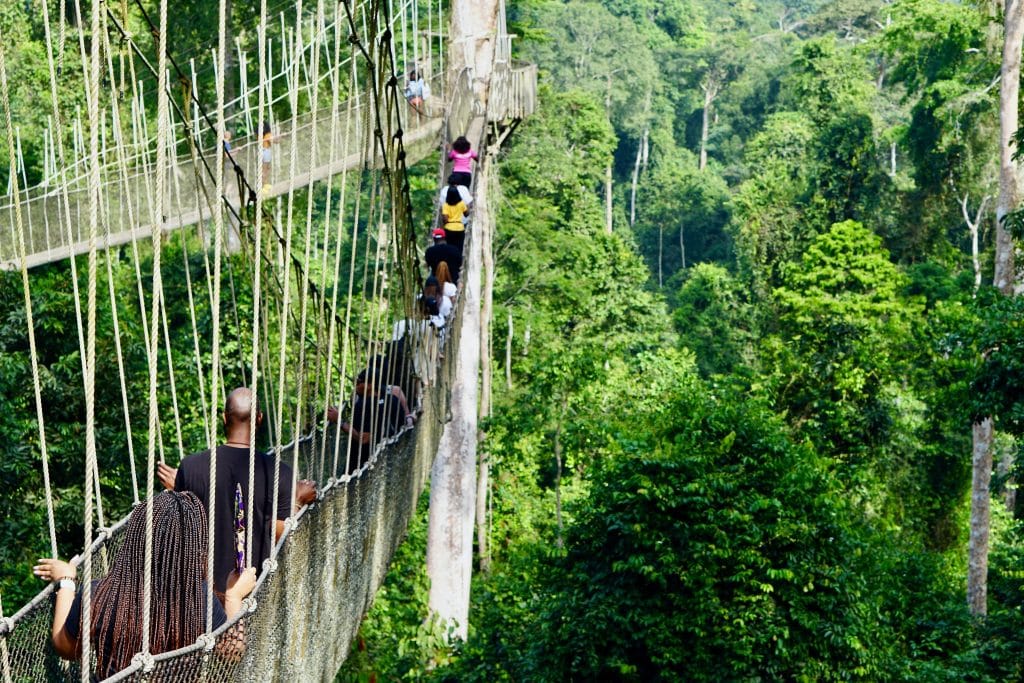The Kakum National Park is a protected area located in the coastal region of Ghana. Covering 375 square kilometers, it was originally established as a reserve in 1931 before being designated a national park in 1992. The park’s tropical forest is its defining feature. Unlike other national parks in Ghana, Kakum was founded at the urging of local residents rather than the government’s wildlife department.
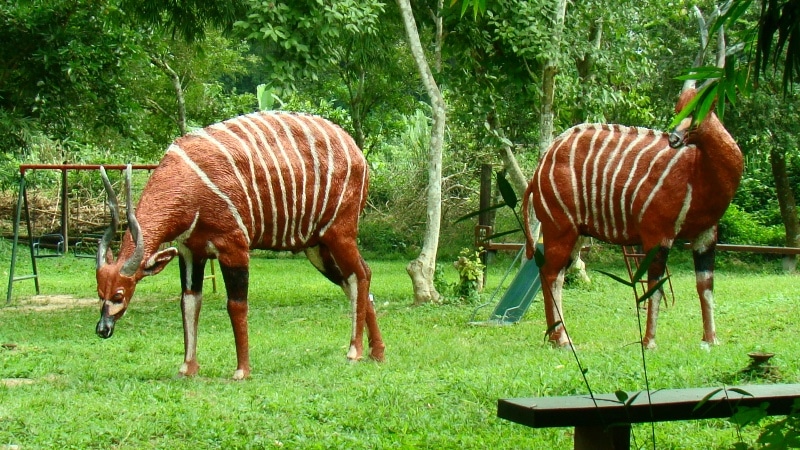
A highlight of the park is its 350-meter-long canopy walkway, which connects seven tree tops and is one of just three such structures in Africa. The park is also home to several endangered species, including the Diana monkey, giant bongo antelope, yellow-backed duiker, and African elephant. Kakum is an Important Bird Area with 266 bird species identified, including eight of global conservation concern such as the white-breasted guineafowl. The park also boasts a thriving butterfly population, and a new species was discovered there in 1993.
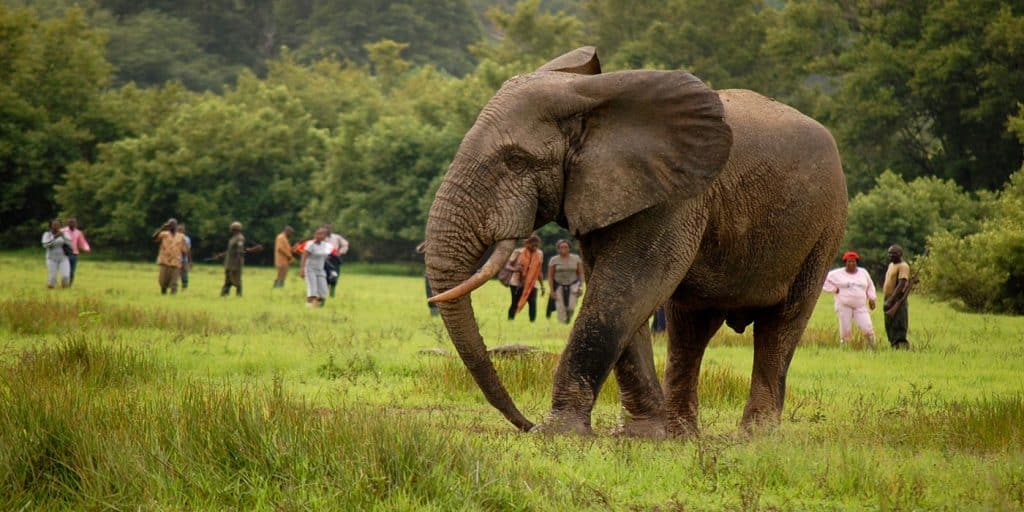
Kakum National Park is home to the densest population of forest elephants in Ghana. The Museums and Monuments Board of the Republic of Ghana has nominated the park for UNESCO World Heritage Site status under criteria vii and x, and it has been included on the tentative List of World Heritage Sites since 2000.
History
The Kakum River headwater catchment area was established as a forest reserve and placed under the management of the Forestry Division in 1931. During this period, logging activities were common, especially of the Khaya ivorensis or mahogany tree species. Logging continued until 1989 when the reserve’s management was transferred to the Wildlife Department.
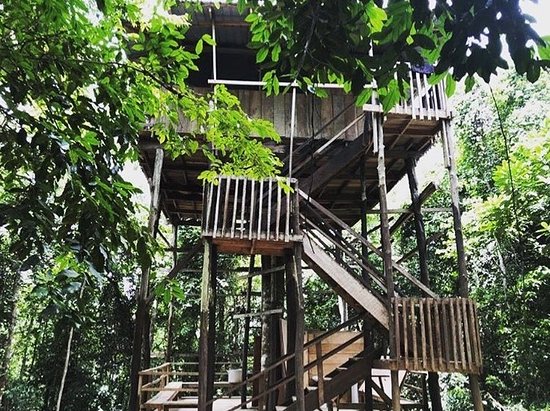
In 1990, a feasibility study and preliminary management plan for the development of the Kakum National Park as an ecotourism destination were conducted under a United Nations Development Program project. The study involved biodiversity assessments of the flora and fauna of the Kakum Forest Reserve and the adjoining Assin-Attandanso Forest Reserve, as well as an elephant population survey. The development of the management plan was a collaborative effort involving forestry and wildlife officials, local communities, Ghanaian universities, regional government officials, and other stakeholders.
Mr. Ebenezer Kwasi Agbley, the then Central Regional Manager for Ghana Tourist Board, initiated and implemented the Tourism Development Scheme for Central Region (TODSCER) program, which birthed the dream of developing Kakum National Park. The program was showcased in America, attracting support from bilateral and multilateral donor institutions, and was later expanded to become the Central Region Development Program under the Central Region Development Commission (CECECOM). Game & Wildlife later came on board to manage and maintain the park.
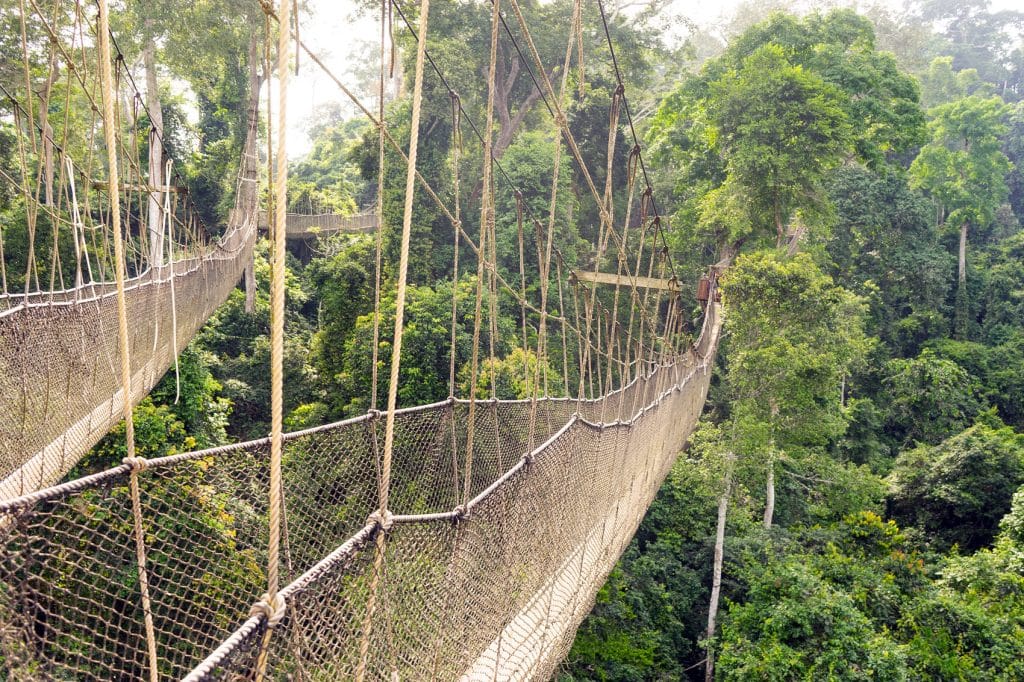
In 1992, the Wildlife Department designated Kakum as a park under the Wildlife Reserves Regulations (Ll 1525) as the Kakum Conservation Area, including the Assin Attandanso Forest Reserve. After conducting a survey of the conservation area’s fauna, it was split into the Kakum National Park and the Assin Attandanso Forest Reserve during the same year. The split was deemed necessary to meet the demand for timber from the forest and the potable water provided by the Kakum River in Cape Coast and 33 other towns and villages.
Tourism
Kakum National Park in Ghana offers visitors a unique and unforgettable experience with its diverse flora and fauna, as well as a chance to explore the park’s lush tropical rainforest canopy. Here are some reasons why people should visit Kakum:
- Canopy walk: One of the main attractions of Kakum is the canopy walkway, which is 350 meters long and suspended over the forest at a height of about 40 meters. Visitors can experience the breathtaking views of the forest from above and observe the different species of birds, butterflies, and monkeys that inhabit the treetops.
- Wildlife: The park is home to a variety of wildlife, including endangered species such as the Diana monkey, giant bongo antelope, yellow-backed duiker, and African elephant. Visitors can embark on guided tours to explore the park and spot these animals in their natural habitat.
- Birdwatching: Kakum National Park is an Important Bird Area recognized by BirdLife International, and the park’s bird inventory confirms 266 species, including eight species of global conservation concern. Visitors can go on birdwatching tours to observe and learn about the different bird species that call the park home.
- Eco-tourism: Kakum National Park is a prime destination for eco-tourism, and visitors can experience the natural beauty and cultural heritage of the region while promoting sustainable tourism practices.
Overall, visitors can expect to have an unforgettable experience at Kakum National Park, filled with adventure, education, and appreciation for the natural world.


